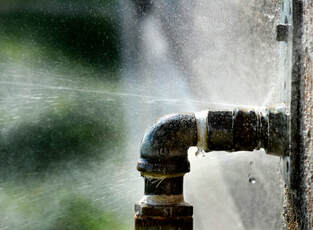6 Ways to Locate Hidden Water Leakages in Your House
6 Ways to Locate Hidden Water Leakages in Your House
Blog Article
What're your thoughts concerning Hacks to detect leaks?

Early discovery of leaking water lines can mitigate a prospective catastrophe. Besides saving you cash, it will reduce the aggravation and disappointment. The minute you find a leak, calling your plumber for repair services is the best remedy. Some small water leakages may not be visible. Here are some hacks that help if you can not spot it with your naked eyes.
1. Analyze the Water Meter
Checking it is a surefire method that aids you uncover leaks. If it relocates, that indicates a fast-moving leakage. This indicates you may have a slow-moving leakage that can also be underground.
2. Examine Water Intake
Assess your water bills and track your water intake. As the one paying it, you ought to observe if there are any inconsistencies. If you detect sudden changes, in spite of your consumption coinciding, it indicates that you have leakages in your plumbing system. Remember, your water costs should drop under the same array monthly. An unexpected spike in your costs suggests a fast-moving leak.
A constant increase every month, even with the exact same practices, reveals you have a slow leak that's also gradually rising. Call a plumber to extensively check your residential property, specifically if you feel a cozy area on your floor with piping beneath.
3. Do a Food Coloring Examination
When it comes to water usage, 30% comes from bathrooms. Test to see if they are running properly. Drop flecks of food color in the container and wait 10 mins. If the color somehow infiltrates your bowl throughout that time without flushing, there's a leak between the container and dish.
4. Asses Exterior Lines
Don't forget to examine your outdoor water lines as well. Should water permeate out of the link, you have a loose rubber gasket. One small leakage can waste lots of water as well as spike your water expense.
5. Check and also Evaluate the Situation
Property owners should make it a habit to inspect under the sink counters and also even inside cabinets for any bad odor or mold development. These 2 warnings show a leak so prompt attention is needed. Doing regular evaluations, even bi-annually, can save you from a major issue.
Inspect for stainings and also weakening as a lot of devices and also pipelines have a life expectations. If you suspect dripping water lines in your plumbing system, do not wait for it to intensify.
Early discovery of leaking water lines can minimize a possible catastrophe. Some small water leakages might not be visible. Checking it is a proven means that helps you uncover leakages. One tiny leakage can throw away lots of water as well as surge your water expense.
If you presume leaking water lines in your plumbing system, don't wait for it to escalate.
WARNING SIGNS OF WATER LEAKAGE BEHIND THE WALL
PERSISTENT MUSTY ODORS
As water slowly drips from a leaky pipe inside the wall, flooring and sheetrock stay damp and develop an odor similar to wet cardboard. It generates a musty smell that can help you find hidden leaks.
MOLD IN UNUSUAL AREAS
Mold usually grows in wet areas like kitchens, baths and laundry rooms. If you spot the stuff on walls or baseboards in other rooms of the house, it’s a good indicator of undetected water leaks.
STAINS THAT GROW
When mold thrives around a leaky pipe, it sometimes takes hold on the inside surface of the affected wall. A growing stain on otherwise clean sheetrock is often your sign of a hidden plumbing problem.
PEELING OR BUBBLING WALLPAPER / PAINT
This clue is easy to miss in rooms that don’t get much use. When you see wallpaper separating along seams or paint bubbling or flaking off the wall, blame sheetrock that stays wet because of an undetected leak.
BUCKLED CEILINGS AND STAINED FLOORS
If ceilings or floors in bathrooms, kitchens or laundry areas develop structural problems, don’t rule out constant damp inside the walls. Wet sheetrock can affect adjacent framing, flooring and ceilings.
https://www.servicemasterbyzaba.com/blog/how-to-detect-water-leakage-in-walls/

I came across that blog post about Finding hidden leaks when looking around the web. Loved our entry? Please share it. Let others find it. Thanks so much for going through it.
Report this page